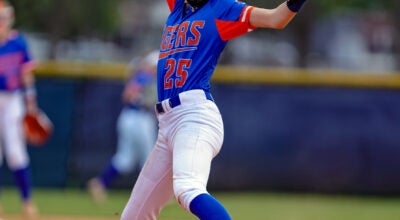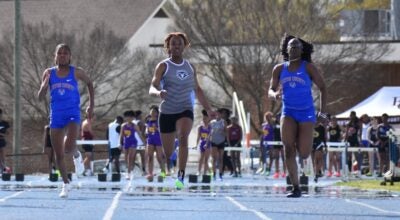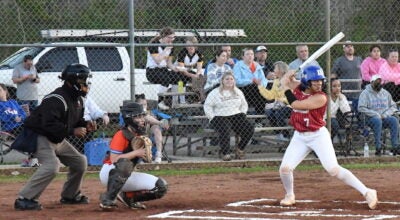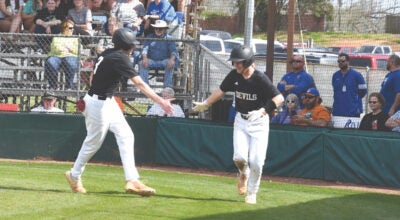Gulf Coast offers family fishing fun
Published 5:30 pm Monday, November 10, 2008
Capt. Yano Serra deftly maneuvered his 21-foot bay boat across the “skinny” water just west of Bayou La Batre. After checking a few landmarks, he steered the boat into one of the many spartina grass-lined channels that meander through the marsh.
“Yeah, this is the right one,” Serra said of the snake-like channel. “There’s a deep hole right up here where we’re going to start.”
Although Serra hunts ducks and deer, he’s not about to forego the fine fall and winter fishing that the Alabama Gulf Coast offers for a variety of inshore species, such as redfish, speckled trout, white trout and flounder. During his week off from his job as captain of a 155-foot crew boat, Serra makes sure he gets his twin 9-year-old daughters, Marie and Maresa, out for some family fishing fun. On our recent trip, with temperatures in the 70s, Serra focused on bait to locate the fish.
“I start looking for the white shrimp in the bayous,” he said. “I find the deep holes, where the shrimp are falling off ledges. Wherever the shrimp are falling off the ledges, the redfish are going to be waiting on the down current side to ambush them.
“A lot of times I’ll see the white shrimp jumping. I’ll see the mullet and redfish running down the edge of the banks when the boat spooks the fish. You’ll see the shrimp jumping in front of the fish. Sometimes you’ll see them jumping in the wheel wash. Over the years I’ve been able to find the deep holes. I just idled around with the depth finder on and found them. Most of the time the deep holes will be in the 90-degree bends in the bayou.”
Serra said it takes several hard cold fronts to move the shrimp out of the bayous and into the Gulf of Mexico. Until the shrimp vacate the bayous, he uses a rig with a slip cork and a half-ounce to one-ounce weight when there is a good current. He sticks with 12-pound monofilament line most of the time.
“I want the weight in mud and the shrimp swimming around in circles,” he said. “When the redfish gets close, the shrimp will start jumping out of the water. I like a super big shrimp. That eliminates small fish from killing it or eating legs off of it. I hook them in the front horn, which lets them swim around a little better. If there’s no current, I’ll just put a shot weight on and hook him in the tail with small cork and just let him swim. The lighter the presentation, the better.”
If Serra has a choice, a day that is not very windy is preferred. That allows him to make a better presentation with the live shrimp.
“You can leave your bait in one spot a lot longer if it’s not windy,” he said. “I like to keep my shrimp right on the ledge. I don’t want to fish the deep hole. They are going to stick their noses right next to the bank and wait for the bait to fall off the ledge.”
Of course, there are plenty of other areas along the Alabama Gulf Coast other than the 20 miles of marsh between the Mississippi line and Heron Bay.
“When I talk about fishing bayous, I’m talking about all around Mobile Bay – the Mobile Delta, Dog River, Fowl River,” Serra said. “You’ve got West and East Fowl River, Dog River, Dauphin Island Bay, and Oyster Bay has a little bit of marsh. The Bayou La Batre bayou has some deep ledges that hold good fish, redfish and big speckled trout. You can fish all that backwater in the Mobile Delta. In Fowl River, I like fishing points. In Goose Bayou, I’ll fish the same way. There are a lot of oyster shells, deep holes and ledges in East Fowl River and Portersville Bay. I like to fish duck blinds because of the barnacles. Barnacles attract bait fish, which attract the redfish.
“If you’re going to fish the 20 miles of marsh west of Heron Bay, you really need a shallow-draft boat and need to know how to run it, especially on low tide. You’d better know the area, because the tide will let you in and will not let you out. I know some people who have spent the night waiting on the tide to come back in. That’s not a pretty sight.”
Serra said patience can be a virtue for cooler weather fishing, to a point.
“If it’s a spot I just came to and haven’t fished it before, I’ll give it 15-20 minutes before I move on,” he said. “If it’s spot I’ve caught fish before, sometimes I’ll give it two or three hours. It depends on what I’m catching. If I’m catching rat reds (redfish under the 16-inch minimum) or trout, I’ll stay in there.
Thanks to Yano and his girls, I got to bring the fish home. The redfish were filleted with the scales intact, while the flounder were scraped to remove the scales and sliced in a crosshatch pattern to promote even cooking.
I liberally sprinkled Cavender’s Greek Seasoning on the fish and then rubbed in extra virgin olive oil. The fish were placed on a hot grill – the redfish scale side down and never turned, while the flounder was placed on a piece of aluminum foil that had been pierced numerous times with a fork. When the redfish can be easily flaked with a fork, it’s ready to come off the grill. Check the flounder spine at the thickest point and if the juices run clear, it’s ready to go. The hard part at the dinner table was determining which fish was best.
As for the remainder of the fish, it was the fillet knife first and 325-degree frying oil later. That was Mm, Mm, Good, as well.
Visit www.specktacklelure.com for more information about fishing the Alabama Gulf Coast.






